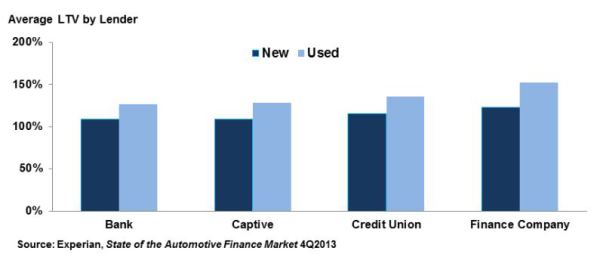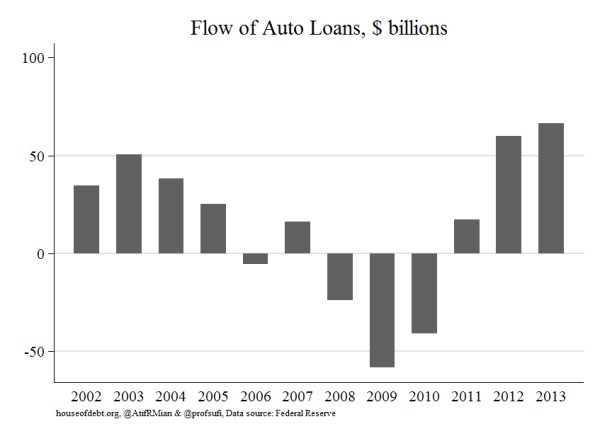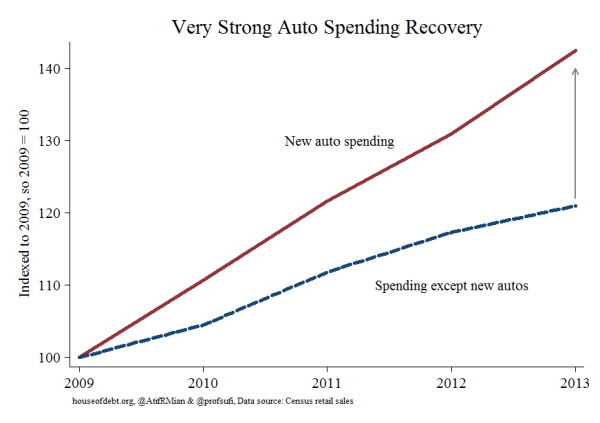Summary: One of the many oddities of this cycle is that many things that were good during the post-WW2 era have become bad in the new era now starting (unrecognizably so, as we remain unaware of our changed circumstances). Like debt. As we see with auto loans, once useful — now malignant.
During the post-WW2 era increasing debt supercharged economic growth for the young rapidly-growing West. But after 60 years our societies carry massive debt loads, both public and private — while their numbers of elderly grow (experiencing a crash of income, plus rising social costs for pensions and health care). Carrying the current load might prove difficult; adding to it is mad.
But that’s not all. Fifty years of growing inequality, for still poorly-understood reasons, have hollowed out the middle class. Diminishing their ability to carry their existing debt, making them dependent on borrowing to maintain their lifestyle.
Example of debt madness: auto lending
Accelerating borrowing was a natural leading indicator of economic recoveries during the post-WW2 era. So economists see desperate borrowing by consumers as a good thing. Such as subprime borrowing to buy cars — or even renting (aka leasing). The madness is in our reaction to this borrowing — vibrant demand! (so similar to the applause for real estate speculators in 2006-07). As in this from a report by BofA-Merrill global economist Ethan Harris, 6 August 2014:

Auto leasing: BofA Merrill graph, 8 August 2014
Households go for the low capital option: leasing soars:
Household outlays on leasing are booming at a 20% yoy pace — a clear sign that demand for vehicles is alive and kicking. With average lease payments lower than typical monthly ownership costs and with a down-payment not typically required to enter into a lease, the surge in vehicle leasing is likely a sign that financial restraints are still holding back some would-be buyers. Thus, as the economy improves, bottled-up household demand for vehicles could translate to higher sales.
Yes, in our society demand is “alive and kicking” by subprime households for cars bought with low-rate loans on easy terms — or even just renting (aka leasing). But does it show recovery — or exhaustion?
The terms are indeed easy
There are four dimensions to loans: the creditworthiness of the borrower, the interest rate of the loan, the length of the loan, and the collateral (the loan to value ratio). A report by Experian Automotive, 2 June 2014, describes the first three.
… average automotive loan term reached an all-time high of 66 months … loans with terms 73-84 months grew to 25% of all loans originated during the quarter. …
The average amount financed for a new vehicle loan also reached an all-time high of $27,612 in Q1 2014, up $964 from the previous year. In addition, the average monthly payment for a new vehicle loan reached its highest point on record at $474 in Q1 2014, up from $459 in Q1 2013.
… Market share for nonprime, subprime and deep subprime new vehicle loans in Q1 2014 rose to 34%.
Six and sever year long auto loans! At what point will the borrower have equity in their cars? Especially since these are probably the subprime borrowers that make up 1/3 of auto lending.
The fourth factor is equally ugly. Lenders are lending more than the value of the collateral (i.e., including closing costs and rolling over the deficit of the buyers’ trade-in). These are averages; half of loans have even higher LTVs. From Semiannual Risk Perspective, Office of the Comptroller of the Currency, Spring 2014:

Semiannual Risk Perspective, OCC, Spring 2014
Why are these numbers important?
Not just as evidence that economists do not see how a new era has begun, but more immediately because auto sales have been a major driver of the recovery. As shown by Atif Mian and Amir Sufi in “Another Debt-Fueled Spending Spree?“, at their website, 31 March 2014. First, lending is rapid :

House of Debt, 31 March 2014
Second, since the crash auto sales have grown much faster than overall consumer spending.

House of Debt: auto sales, 31 March 2014
For More Information
(a) About consumer lending:
- Rising consumer debt driving the recovery: boon or bane?, 10 November 2013
- Auto loans are a driver of the expansion, but might be running out of gas, 1 April 2014
- Debt unleashed again to ravage America: out of control auto lending, 2 July 2014
(b) About the debt supercycle:
- Death of the post-WWII geopolitical regime – death by debt, 8 January 2008 – Origins of the long economic expansion from 1982 to 2006; why the down cycle will be so severe.
- A picture of the post-WWII debt supercycle, 26 September 2008
- Debt – the core problem of this financial crisis, which also explains how we got in this mess, 22 October 2008
